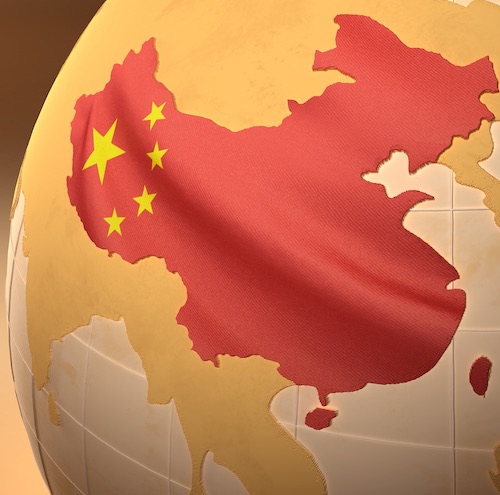 The Chinese intellectual property legal system has matured rapidly. Just 40 years ago China did not have a patent system, and today the country is aggressively using patent policy to create an innovation pathway.
The Chinese intellectual property legal system has matured rapidly. Just 40 years ago China did not have a patent system, and today the country is aggressively using patent policy to create an innovation pathway.
While the United States continues to struggle with what is patent eligible, and just yesterday USPTO Director Andrei Iancu told the House Judiciary Committee during an Oversight Hearing that in many technology areas what is patent eligible is unclear, and is depressing innovation, the Chinese are taking a different path. In April 2017, China provided revised guidelines relating to the patentability of both software and business methods.
Previously, software related innovations were required to be claimed using “means plus function” language, which lead to very narrow protection. After the revised guidelines went into effect software related innovations can be protected as a “computer program product,” “a machine-readable medium,” and “an apparatus comprising a process configured to execute instructions on a computer-readable medium”.
With respect to business methods, claims relating to business models that include a technical feature in addition to business rules or methods are patent eligible under the new guidelines. Much like with software inventions, the new rules do not open the door wide to all kinds of business methods, but they do provide the opportunity to obtain some business method protection in China.
China has also worked hard to improve its court system and implemented changes at a breathtaking pace. Since 2014, three specialized IP courts in Beijing, Shanghai, and Guangzhou hear all first instance IP matters in these regions. These efforts have expanded to the opening of specialized IP tribunals in Wuhan, Nanjing, Suzhou, and Chengdu in early 2017. By late 2017, an additional new IP court was established in Shenzhen, a technology and manufacturing hub in southern China. See Rapid changes in the Chinese Legal System.
Meanwhile, China is pursuing what they refer to as the Made in China 2025 initiative.
Made in China 2025 is a program of the Chinese government to comprehensively upgrade domestic industries to raise the domestic content of of core components and materials produced in China up to 70% by 2025. The Made in China 2025 program identifies 10 key industry sectors to support its domestic goals, including new advanced information technology, aviation, rail, new energy vehicles, agricultural machinery, new materials and biopharma.
These sectors have been at the center of complaints over the forced transfer of patented technologies to Chinese domestic firms as well as outright theft of trade secrets. The Chinese government has responded to concerns over the Made in China initiative with one senior economic official defending the program as open to both foreign and private companies.

![[IPWatchdog Logo]](https://ipwatchdog.com/wp-content/themes/IPWatchdog%20-%202023/assets/images/temp/logo-small@2x.png)

![[[Advertisement]]](https://ipwatchdog.com/wp-content/uploads/2023/01/2021-Patent-Practice-on-Demand-1.png)
![[Advertisement]](https://ipwatchdog.com/wp-content/uploads/2024/04/Patent-Litigation-Masters-2024-sidebar-early-bird-ends-Apr-21-last-chance-700x500-1.jpg)

![[Advertisement]](https://ipwatchdog.com/wp-content/uploads/2021/12/WEBINAR-336-x-280-px.png)
![[Advertisement]](https://ipwatchdog.com/wp-content/uploads/2021/12/2021-Patent-Practice-on-Demand-recorded-Feb-2021-336-x-280.jpg)
![[Advertisement]](https://ipwatchdog.com/wp-content/uploads/2021/12/Ad-4-The-Invent-Patent-System™.png)







Join the Discussion
3 comments so far.
angry dude
May 29, 2018 12:56 pmGene,
Can you read Chinese ?
How much time will it take you just to reproduce a few of those “characters” ?
Just try it once
It is a self-serving system where only large US companies WITH Chinese partners can navigate their system
For the rest of us Chinese patent system is as good as non-existent
It’s not even close to what US Patent System (used to) provide for foreign patent applicants making filing US applications (provisional or regular) first step in the patenting process by many foreign inventors – large and small (in the past)
Gene
May 25, 2018 10:54 amhaving about 50+ pending patent apps in china over the last few years, i can tell you that recently Chinese examiners have become real aholes. when they reject your claims for illogical reasons (because their bosses decided to raise the bar for patentability) they don’t have to answer to anyone. they are copying the USPTO higher-profit operations: instead of granting the patent as was done before, first force the applicant pay more money via appeals and other procedures, then grant the patent. you get more money that way.
Silence Dogood
May 24, 2018 11:00 amI find it interesting that U.S. imports from China are five times greater than U.S. exports to China. It is clear that China’s ability to manufacture products exceeds our own in many respects (cost, experience, labor force availability, etc.). If China has all this intellectual property already, why are we so keen on providing more intellectual property to them in the only sector where we’ve had a leg up on them (i.e., patents). Seems if we cannot get good IP protection in China, we should focus on improving our own manufacturing abilities rather than relying on an inconsistent, self-serving China IP protection system. It seems we are shooting ourselves in the foot if we continue to provide our IP to them, knowing that their system is so self-serving in many instances.